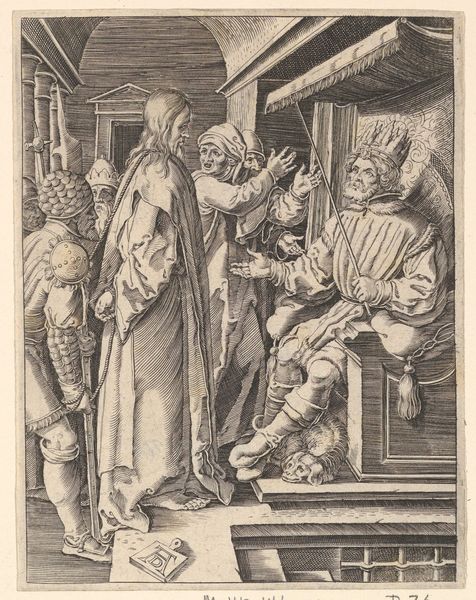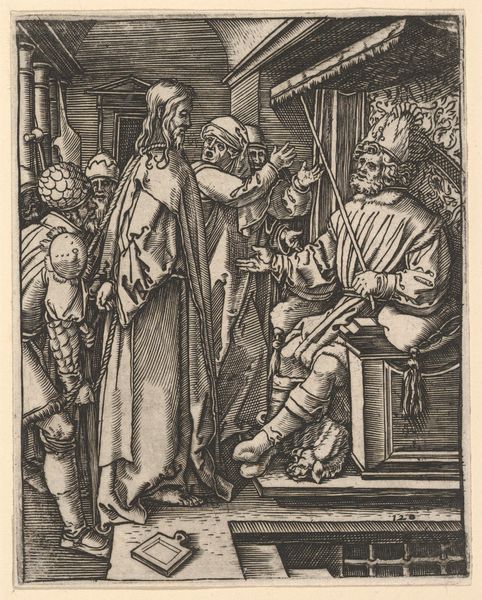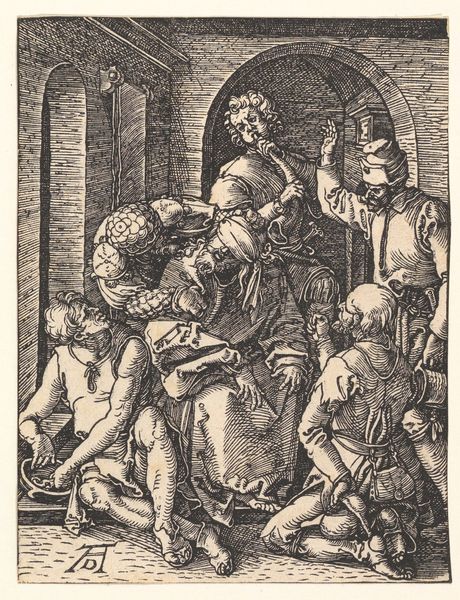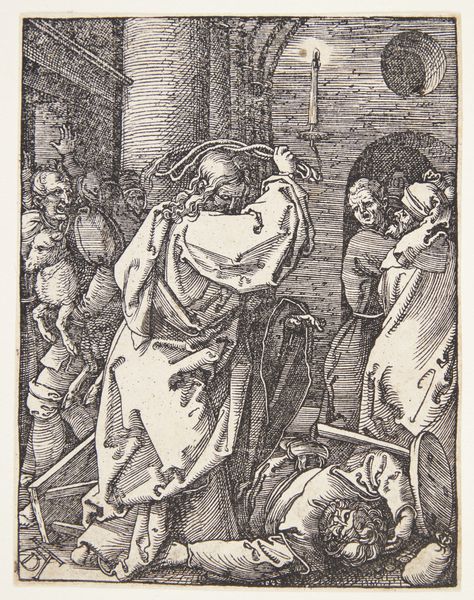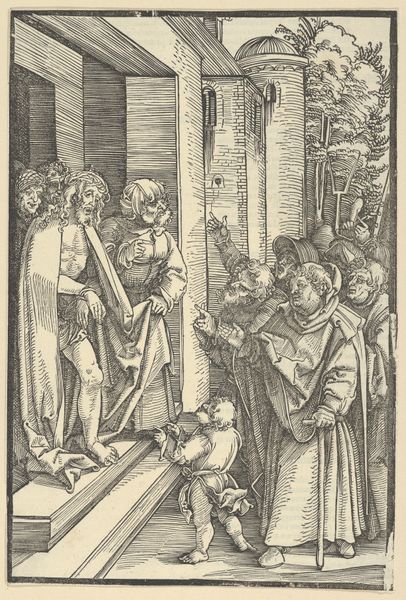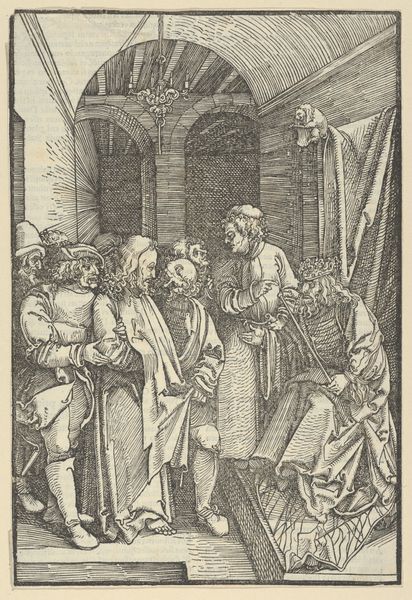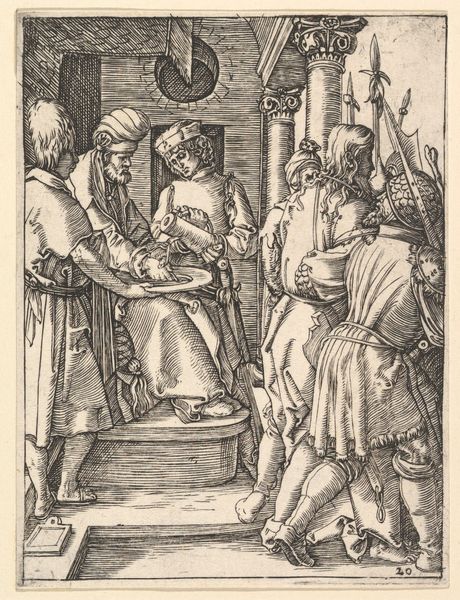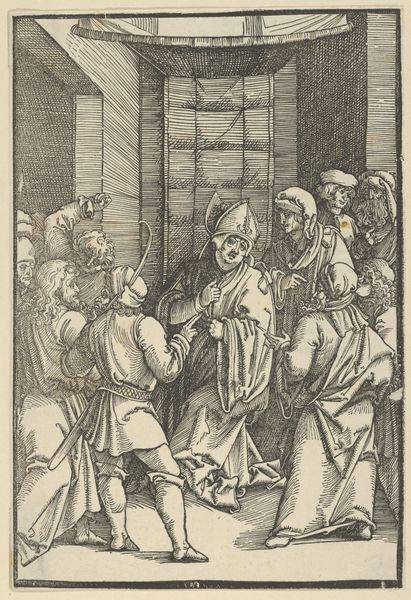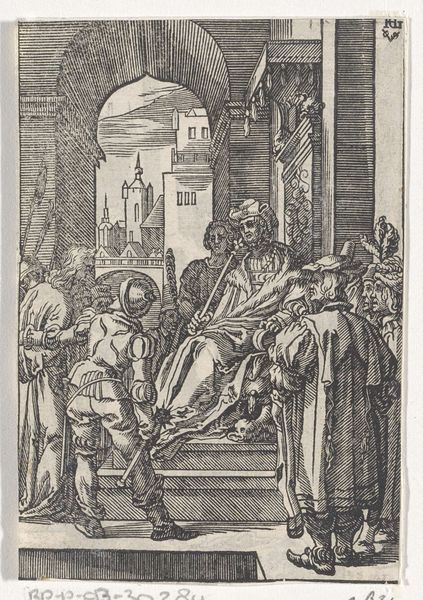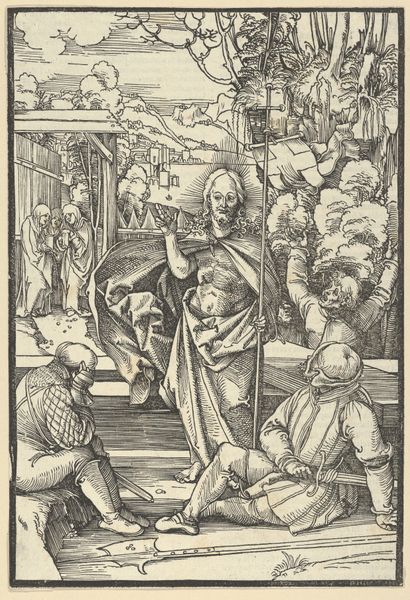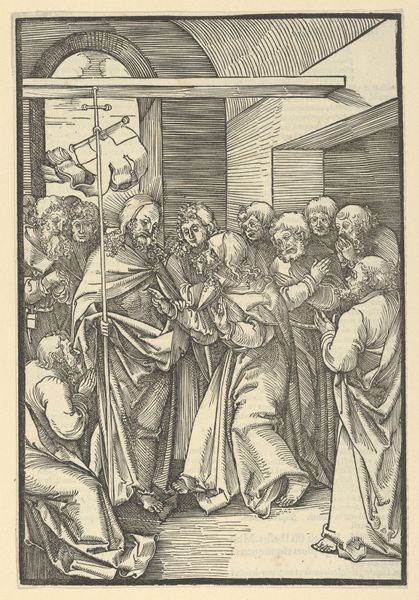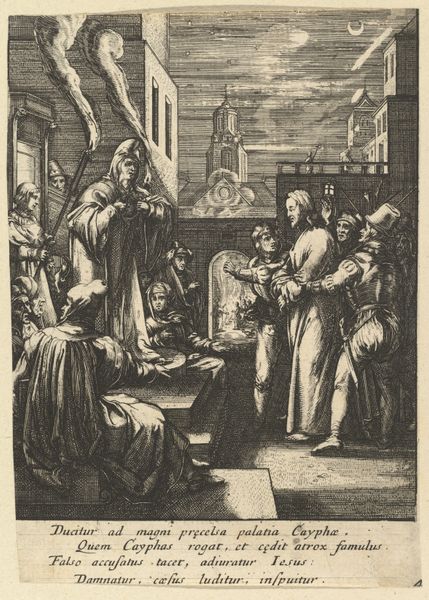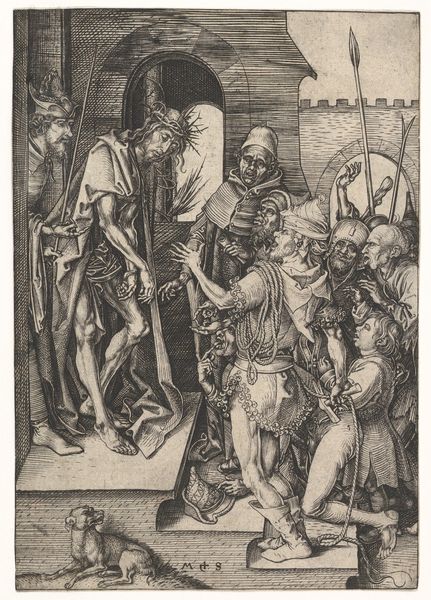
drawing, print, woodcut
#
drawing
#
narrative-art
# print
#
figuration
#
woodcut
#
history-painting
#
northern-renaissance
#
christ
Dimensions: sheet: 5 x 3 7/8 in. (12.7 x 9.8 cm)
Copyright: Public Domain
Curator: Today we're looking at Albrecht Dürer's woodcut print, "Christ Before Herod," created around 1509, now housed at the Metropolitan Museum of Art. Editor: My first impression? There's an intense claustrophobia conveyed here, and yet an incredible detail within the print; the stark contrast of the dark lines against the paper gives the scene an ominous feeling. Curator: It’s interesting that you note the claustrophobia. Considering its placement within “The Small Passion” series, it is Dürer portraying a larger, pervading sense of political and religious corruption within the events of the Passion. Christ, centered, is literally hemmed in by accusers, jeering onlookers and the indifferent authority of Herod, himself. Editor: Absolutely. And Herod's posture - slumped and almost bored-looking atop his throne, it communicates so much about abuses of power and disregard. Dürer really pays attention to the materials of each figure’s clothing as a subtle signal, doesn't he? Look at the detail on the fabrics. It speaks to societal hierarchy. Curator: It's more than a signal, I think; the woodcut, and printed materials more broadly, created an opportunity to spread narratives that otherwise were inaccessible. So what Dürer's choices include here about wealth, clothing, power…that's no accident, and that's deeply embedded within both its historical and sociopolitical context. Even his famous "AD" mark, sitting plainly, declares the labor of making art. Editor: It underscores your point about access to printed imagery: This artwork becomes more than a rendering of Christ before Herod. Through his mastery of woodcut, Dürer is implicating broader social realities through material form. In his era, it surely brought conversations to dinner tables previously reserved only for nobility. Curator: Exactly. By examining and reproducing this particular moment, he makes claims about innocence, justice, and how institutions perpetuate inequality, which continues to be timely today. Editor: It all comes back to labor and value, doesn't it? Even Dürer's signature; it becomes this small, material affirmation that demands reconsideration of not only sacred history, but of our place in the larger scope of producing imagery. Curator: Agreed. Ultimately, the genius of Dürer lies not just in the precision of his cuts but in the cutting critiques his work delivers.
Comments
No comments
Be the first to comment and join the conversation on the ultimate creative platform.
